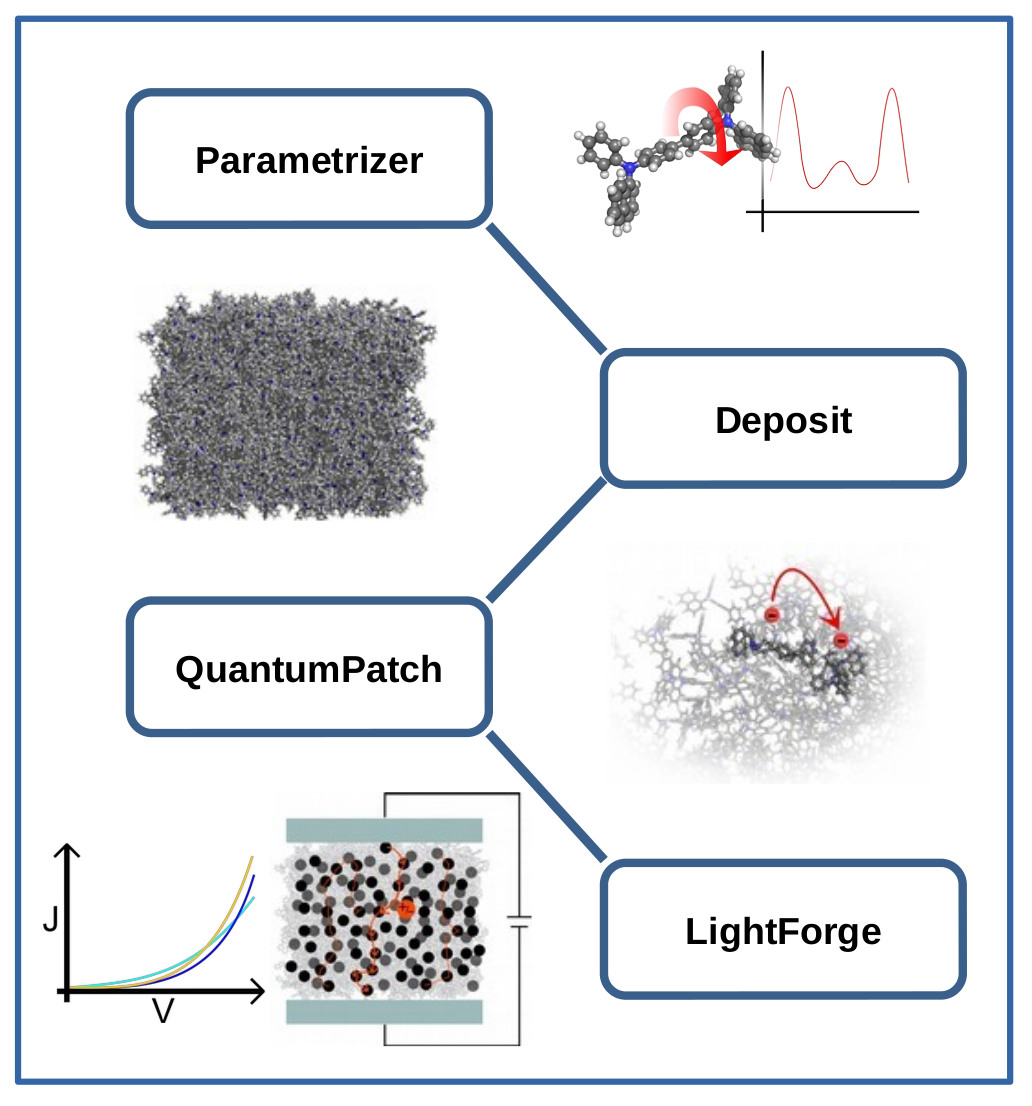
The Nanomatch Virtual Lab is a software toolkit for the virtual design of organic electronic (OE) materials and devices applied in OLED and OPV technology. Following a seamless multiscale modeling approach, this toolkit bridges the gap between fundamental materials chemistry and device design, complementing experimental R&D to eliminate performance bottlenecks and tackle various challenges in OLED and OPV technology such as limited efficiency and degradation.
In our Virtual Lab, a digital twin of an OLED or OPV device is constructed in the computer. This digital twin, a virtual replica of the real device on atomistic level, incorporates properties of the real device down to the electronic scale. In various virtual experiments on digital twins, microscopic processes such as charge transport or excitonic processes are modeled using material- and state-specific rates derived from first principles. As equivalents to real lab experiments, they provide time-resolved particle trajectories to analyze IVs, IQEs, PLQ, charge carrier balance, doping, etc. These virtual experiments can be applied in various fashions:
- to efficiently screen materials and device setups for virtual optimization
- as virtual microscopes, delivering insight on how microscopic processes trigger and balance device performance, which is hard to access experimentally. This way, virtual experiments generate understanding of microscopic bottlenecks in device performance, enabling a systematic approach to improve devices and materials.
- compute macroscopic material properties, such as DOS or charge carrier mobility, as input for continuum models (drift diffusion).

Explore the “equipment” of our virtual lab (simulation tools and methods), and check out some of the virtual experiments. If you want to run virtual experiments yourself, visit our download page to get your own virtual lab. Technical information is available here.